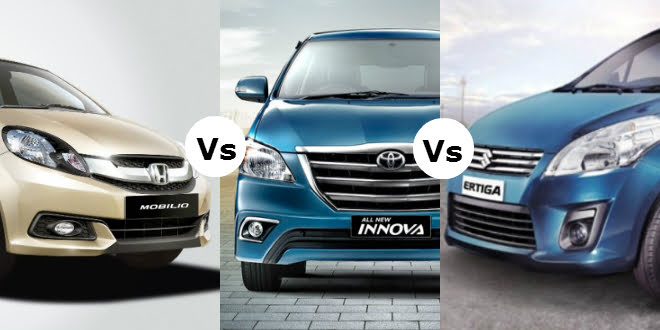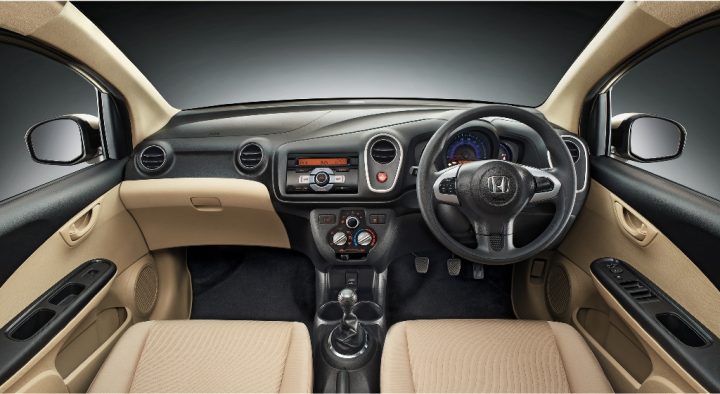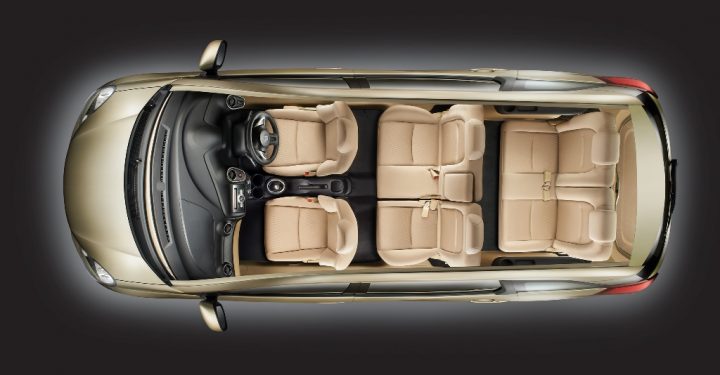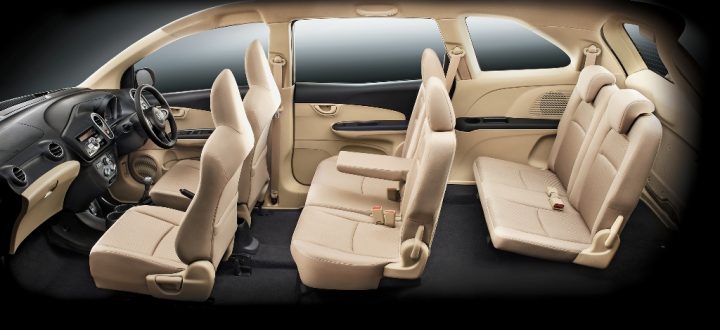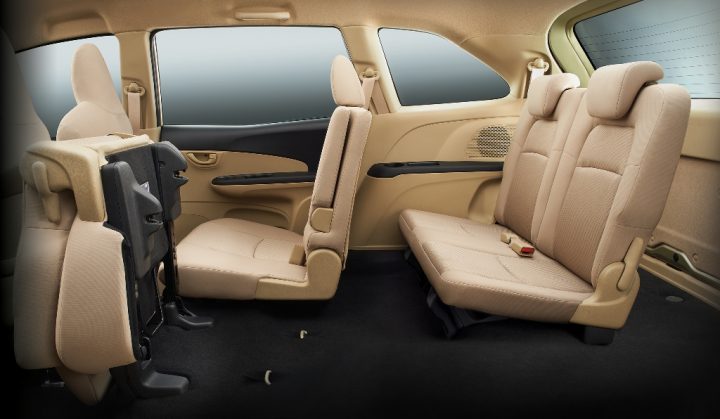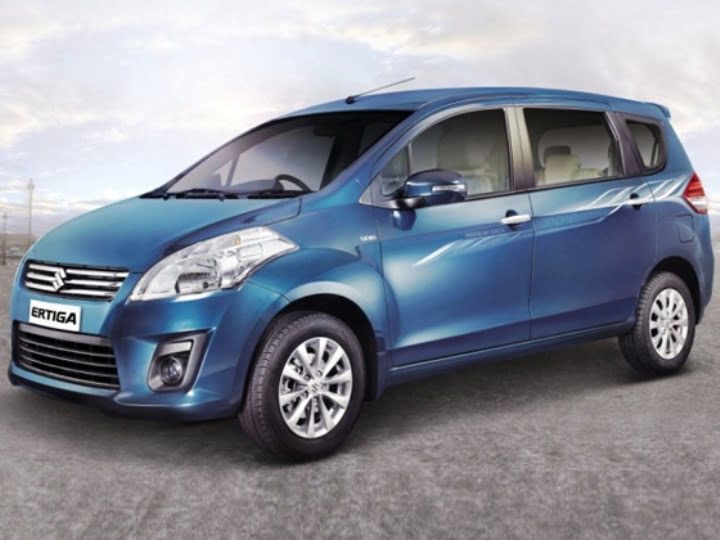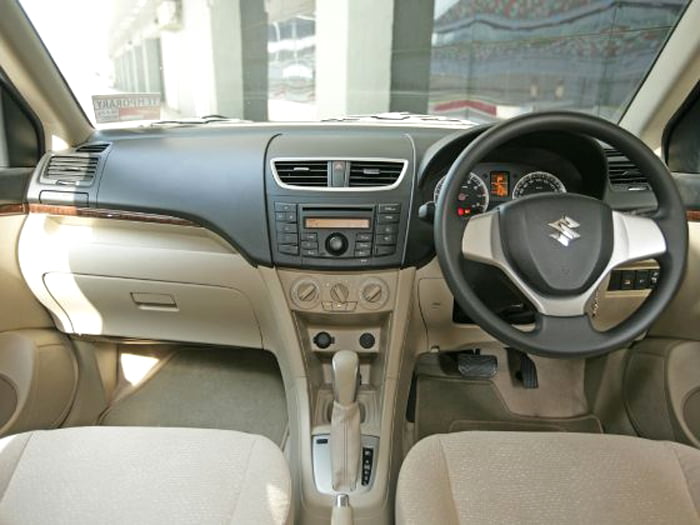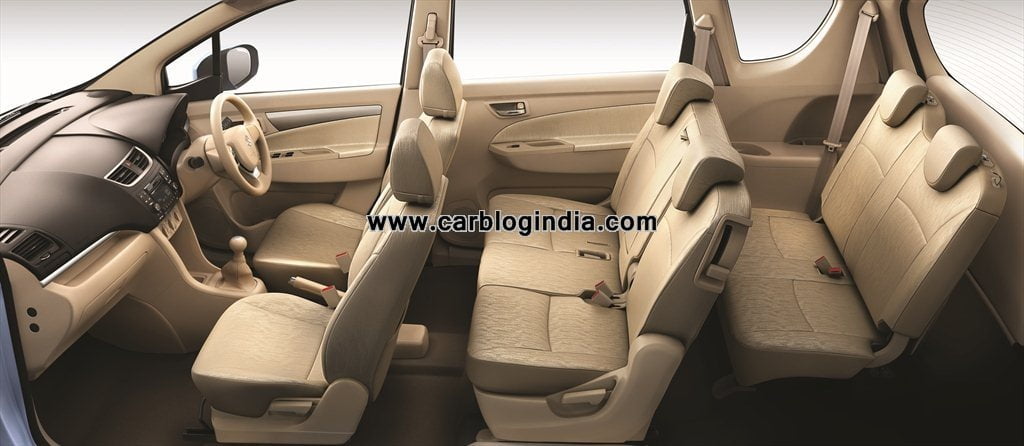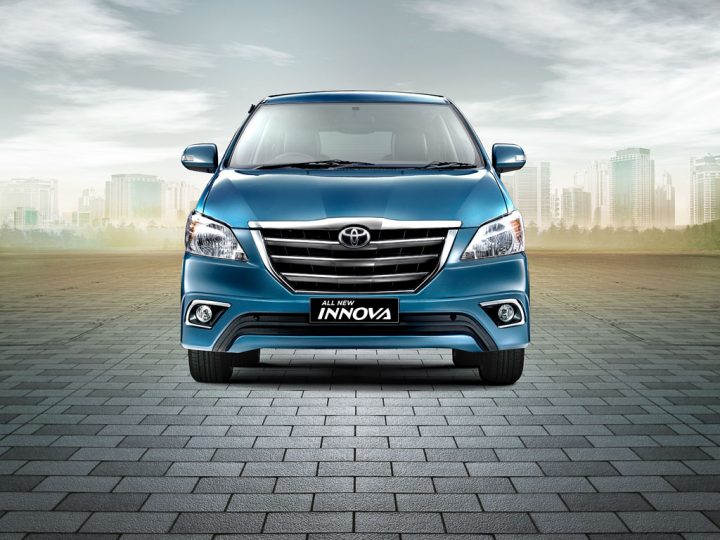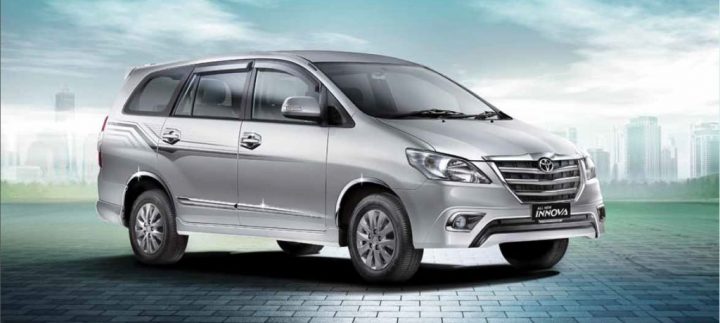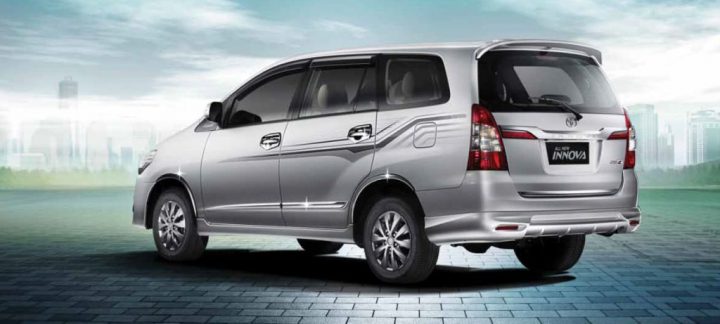For the price bracket you have selected, the following vehicles are ideal for those looking for a compact vehicle which can seat at least 7 people. These compact MPVs drive like cars with most of them being based on the same platform as cars in their family, they have at least three rows of seating to appeal to those looking for a family hauler, they also are feature loaded to attract customers who may have been looking at similarly priced sedans.
The most important factor though, is the fact that these MPVs are powered by frugal diesel engines which make them a very attractive proposition. We compare the best MPVs to buy in this segment and find out which one suits who.
The cars we are comparing today are the Honda Mobilio, Maruti Suzuki Ertiga and Toyota Innova.
Honda Mobilio
Price
Rs. 6.49 Lakh to Rs. 10.86 Lakh
Styling
The Honda Mobilio is based on the Brio hatchback and that shows in the design too. The front fascia looks exactly like the Brio except for some styling changes made to differentiate it from its hatchback cousin. Changes begin to appear from the rear door onwards, and the MPV is best viewed from the rear three-quarters. Honda could have changed the front of the MPV to suit the smart design at the rear, though it does not mean that the Mobilio looks bad in any way. Except for the short front portion, the Mobilio looks well proportioned otherwise. Things like the small kink on the rear door which allows for a large window, the wraparound rear windshield look which is achieved by the blacked out bottom D-pillar and the very smart rear make this a good looking MPV.
The dashboard design may not be everyone’s taste, it has a mixture of different design themes that do not gell well together. Here too Honda has decided to continue with the design seen on the Brio and the Amaze, which may be a letdown to those who may have experienced the aforementioned cars. The quirky design may not appeal to everyone, but there are plenty of nice touches everywhere else. The door handles look nice, the steering wheel is simple but easy on the eyes (and hands), the black and beige interior colour combo is conventional. The ‘circular’ theme inside the cabin will be familiar to those who have experienced the Brio or Amaze before.
The Mobilio feels spacious, not only because it is a large car, but also because of the large window area around the car. This allows a lot of light to filter in, and combined with the beige interiors the cabin feels very airy. Passengers sitting in the 3rd row too will feel good.
Comfort
Honda is known for it’s spacious cars, and the Mobilio is no different. The wheelbase of the car has been extended by over 300 mm over the Brio, this helps free up a lot of space. The front seats are well designed but are thinner than the ones on the Amaze, which means that if the rear passenger is too tall you can feel their knees through the seat backrest. The 2nd row seats are better insulated (but still not on par with competition) and can be easily accessed thanks to the massive rear doors. The second row seats can be adjusted horizontally and the backrest can also be adjusted for better comfort, the centre armrest only adds to the comfort factor. The 2nd row though is not for 3 healthy sized adults, the centre passenger will not liked the slightly higher seating position and the hard backrest. The air-con for the rear passengers also helps keep the cabin cool, it is a proper A/C unit and not just a blower. The 3rd row seating, as is the case with the Mobilio’s chief rival the Ertiga, is best served for kids on long drives; the lack of under-thigh support and the knees-to-the-sky seating position for adults sitting here will cause quite a lot of grumbling and pain. The roof is tall enough to accommodate most passengers who sit on the 3rd row, the Mobilio’s sorted suspension also ensures that you are not flying off everywhere with each bump on the road.
The luggage compartment of the Mobilio is a big advantage, it is a marvel how Honda managed to find 223-litres of storage capacity (with the seats up) in an MPV which is less than 4.5-metres long. The large boot area along with the low loading bay ensures that you can fit a large suitcase and couple of medium sized bags without folding the 3rd row seats down. Fold those down and you get 521-litres of space, a 50:50 split also means greater flexibility.
The quality of materials used inside will be a bit of a let-down for people who compare the cars in this segment, and it’s especially surprising considering that this is a Honda product. The plastic used on the dashboard is tough but is a bit too hard. The 2-DIN audio system and the manual A/C controls feel a bit of a let-down when compared to the competition. NVH levels are not satisfactory, especially because of the cost cutting done around the car. The rear passengers will hear road-noise at higher speeds as the wheel well is not insulated at all. Engine noise is well maintained, even on the diesel variant but wind and road noise have not.
Driving dynamics of the Mobilio is one of the best in the segment. Drivers will appreciate the low-seating, good-visibility thanks to the large windows and low dashboard, the responsive steering, short-throw gearbox, good-engines and the good suspension setup. The diesel engine is very tractable, Honda has managed to keep the power delivery of the i-DTEC engine very linear; which means that driving the Mobilio diesel in the city is very easy. Low weight contributes to a 82 BHP/ton power-to-weight ratio which helps the MPV accelerate without much effort, it can maintain good speeds on the highway and overtaking another fast car does not have to be a pre-planned process. Driving enthusiasts will love the 1.5-litre i-VTEC engine, it is the same one that powers the City, it revs out till 7,100 RPM and the power doesn’t trail off till it reaches the limiter.
Specifications
- Engine: 1.5-litre, 4-cylinder petrol / 1.5-litre, 4-cylinder diesel
- Power (Petrol/Diesel): 117 BHP / 99 BHP
- Torque (Petrol/Diesel): 145 Nm / 200 Nm
- Transmission: 5-speed manual
- Mileage (Petrol/Diesel): 17.3 KMPL / 24.2 KMPL
- Range (Petrol/Diesel): 726 Km / 1016 Km
Recommended Variant
[box type=”success” ]Honda Mobilio V (Petrol)[/box]
Maruti Suzuki Ertiga
Price
Rs. 6.40 Lakh to Rs. 8.49 Lakh
Styling
The Maruti Suzuki Ertiga is based on the same platform as the Swift and gets an all new design. It’s a smart looking car, but there is no wow factor about it. Compared to the Swift, which is still a good looking car, the Ertiga looks plain-jane. The front is dominated by the wraparound headlights, compact grille and a simple bumper which may takes inspiration from various cars in Maruti’s stable. The sides are just plain, with large windows and the rear is where things get boring. This ‘make everyone happy’ approach may make the Eritga look boring, but offends less people and helps retain more customers.
The Ertiga is unmistakably an MPV, there is a upward sloping roofline, large doors and upward sloping windowline and a hatch-door at the rear. It is also a compact MPV, which you will notice if you compare it to other UVs like the Xylo or the Innova.
Inside, it is familiar Maruti territory, the company has used parts from the Swift, Ritz and SX4. In one way, it is good thing as sharing parts keeps the costs down and the quality is not bad too. But the design is nothing special and those migrating from the aforementioned cars will not like the fact that the interiors don’t look that different. The beige is too garish and is hard to keep clean. Design-wise, the Ertiga scores high as the interiors are easy on the eyes.
Comfort
Maruti worked hard on the Ertiga, it has to compete with sedans, compact sedans and other UVs and needs to be at the top of its game. The typical Maruti quality found on the Swift, Ritz and SX4 has been improved upon. There are some plastics and buttons around the cabin which feel as though they will not be able to handle the rough use that a typical family hauler is subjected to. The seats are placed higher than the aforementioned cars and getting in and out of the first and second rows of seats is easy. Access to the 3rd row is restricted as the 2nd row seats do not fold forward, only the backrest folds down.
Seating is very comfortable on all seats except for the ones in the 3rd row. This is a 5-seater with two extra seats, and the last row seats are best suited for shorter adults or kids. Seating three people abreast in the second row is also not advisable as the Ertiga is not very wide. The biggest issue that you will find is that the Ertiga is not a very good 7-seater and is also not a very good 5-seater. If you plan to carry 5-people plus extra luggage, the limited-width, the limited luggage area and the one-piece 3rd row seat will hamper you. If you want to carry 7-people and some luggage, the limited width, uncomfortable 3rd row seat and a paltry 135-litre boot space will make it a painful journey for some.
Both the powerplants on the Ertiga fit the car well. The 1.4-litre petrol is very refined and has been tuned for low-end torque, but the mid- and higher-end power is nothing to write home about. Short gear ratios and the sweet shifting transmission is a boon. After the initial boost, the acceleration is not great; though the engine can rev up to 6000 RPM where it makes the highest power, the power delivery is not enthusiastic and the engine note is a bit trashy. It is best to upshift early than to keep the engine boiling, the vibrations from the engine are kept to a minimum though.
The 1.3-litre diesel may be familar to most of you, it is used on so many cars sold in India. The Fiat-sourced diesel engine is not the best to drive around town, the noticeable turbo lag and the huge boost that accompanies the turbo waking up can lead to a jerky drive in stop-go traffic. The diesel clatter that you may associate with most other units is not there on the Ertiga, whether you’re at idle or driving it at higher speeds. The engine does sound gruff when you rev it very hard though.
The Ertiga rides very well, and being based on the same platform as many cars in Maruti’s stable, the ride is very pliant and ‘car-like’. The monocoque chassis and car-underpinnings means that the Ertiga rides like your normal sedan, the bumps are filtered out well, the roll is minimal and the suspension is taught enough to take undulations without destabilising the car. You will like the comfortable first and second row seats fro their plushness and the tall seating position that they offer. It is one of the best driving MPVs in its segment, closely followed by the Mobilio.
Specifications
- Engine (Petrol/CNG /Diesel): 1.4-litre, 4-cylinder petrol / 1.4-litre, 4-cylinder, b-fuel / 1.2-litre, 4-cylinder diesel
- Power (Petrol/CNG /Diesel): 94 BHP / 81 BHP / 71 BHP
- Torque (Petrol/CNG/Diesel): 130 Nm / 110 Nm / 200 Nm
- Transmission: 5-speed manual
- Mileage(Petrol/CNG/Diesel): 16.02 KMPL/ 22.80 KMPKg / 20.77 KMPL
- Range (Petrol/CNG+Petrol/Diesel): 721 Km / NA / 935 Km
Recommended Variant
[box type=”success” ]Maruti Suzuki Ertiga ZXi[/box]
Toyota Innova
Price
Rs. 11.48 Lakh to Rs. 14.92 Lakh
Styling
One of the oldest designs this comparison, the Toyota Innova has had the same basic profile since it was launched in India in 2005! The latest facelift makes it look ugly, truth to be told. The very large chrome grille at the front is… well… hideous. There are some changes which are good, the headlights from the previous update (in 2012) look good, the side-mouldings which have been moved lower divide the bulk well. The rear is again a hit-or-miss, the big chrome strip and the reflectors are not to everyones tastes. The top-of-the-line Z variant (which is exclusive to the diesel variants) gets stuff like a chrome muffler cutter, a rear spolier, new graphics (which may divide opinion) and new interior trim. The lower variants continue to get the same design as the earlier facelift, which is a bit easy on the eyes.
Move inside and the differences are minimal as compared to previous iterations of the Innova. The top end ‘Z’ variant gets grey-wood trim and the lower variants get faux-wood trim. There’s a lot of beige and grey plastics around the cabin to make it look airy, the large glass-house area also adds to the airiness. The silver surround around the multimedia unit and A/C controls stands out and does not gel with the beige colour. The utilitarian design of the MPV may help parts last long, but it will not impress those who were looking for a bit more class considering the cost.
The Toyota Innova is highly regarded by both commercial users and private users because it is a tough vehicle supported by Toyota’s reliable service network. The Innova can take a beating thanks to its ladder-on-frame chassis, but has an unnaturally pliant ride. It is easy to maintain but is at the same time a very well built machine. The demand for the vehicle also means that resale value of the MPV is very high, all these factors make it a popular choice among people
Comfort
Though based on a ladder-on-frame chassis, the Toyota Innova has a surprisingly pliant ride. It also does not sway all over the place at high speeds and when going over undulating roads, these reasons along with the fact that it is a very spacious MPVe is why both drivers and passengers like the Innova. The seats are well contoured, people will especially like the captain seats which come standard on the 7-seater variants. The bench seats on the 8-seater variants are also not bad. The wide cabin allows for 3-people to sit abreast without much discomfort unlike the competition and that is another major selling point for the Innova.
Toyota will sell you a petrol variant of the car (available with the GX, and VX trim) if you want to. But the low mileage and high costs involved does not attract many customers, so we will not go beyond saying that you can order the Innova with a petrol engine.
The diesel powered variants of the Innova are the most popular, and it is easy to see why. It is a spacious car, it has a decently tractable engine, the ride is comfortable and the savings (because of the lower fuel cost) is higher. The engine is the loudest is this comparison and the power to weight ratio is the lowest here. Though the diesel engine can handle the weight of the easily, it is not as smooth as its competition, the noise at higher speeds is higher too. The big size which translates to the very spacious cabin also means that the Innova is not very easy to maneuver in the city, though its large presence and heavier build does help when taking it on the highway. Drivers will find the shift-throw a bit too much and will not appreciate the vibrations of the engine filtering through the gear-lever and the pedals.
There are downsides of buying an Innova are higher today than ever. Toyota has increased the prices of the Innova over the years, though very little has been added in terms of equipment and nothing has changed in terms of mechanicals. The competition now provides better ride-and-handling, better performance, adequate space and more features for much less money. The only reason why you will want to buy the Innova is because you need the spacious cabin that it provides and can spend the money that the company demands for it. Otherwise, the Innova does not make much sense.
Specifications
- Engine (Petrol / Diesel): 2.0-litre, 4-cylinder, petrol / 2.5-litre, 4-cylinder, diesel
- Power (Petrol / Diesel): 131 BHP / 101 BHP
- Torque (Petrol / Diesel): 181 Nm / 200 Nm
- Transmission: 5-speed manual
- Mileage (Petrol / Diesel): 10.35 KMPL / 12.99 KMPL
- Range (Petrol / Diesel): 802 Km / 983 Km
Recommended Variant
[box type=”success” ]Toyota Innova VX 7-Seater (Diesel)[/box]
So What Should You Buy?
[box type=”info” ]Best Value-for-Money Buy: Honda Mobilio[/box]
[box type=”info” ]Most Premium (Inside and Outside): Maruti Suzuki Ertiga[/box]
[box type=”info” ]Best Mileage and Cost of Ownership: Maruti Suzuki Ertiga[/box]
[box type=”info” ]Most Spacious Cabin: Toyota Innova[/box]
[box type=”info” ]Best After Sales Service: Maruti Suzuki Ertiga[/box]
[box type=”info” ]Best Resale Value: Toyota Innova[/box]
[box type=”info” ]Most Fun to Drive: Honda Mobilio[/box]

